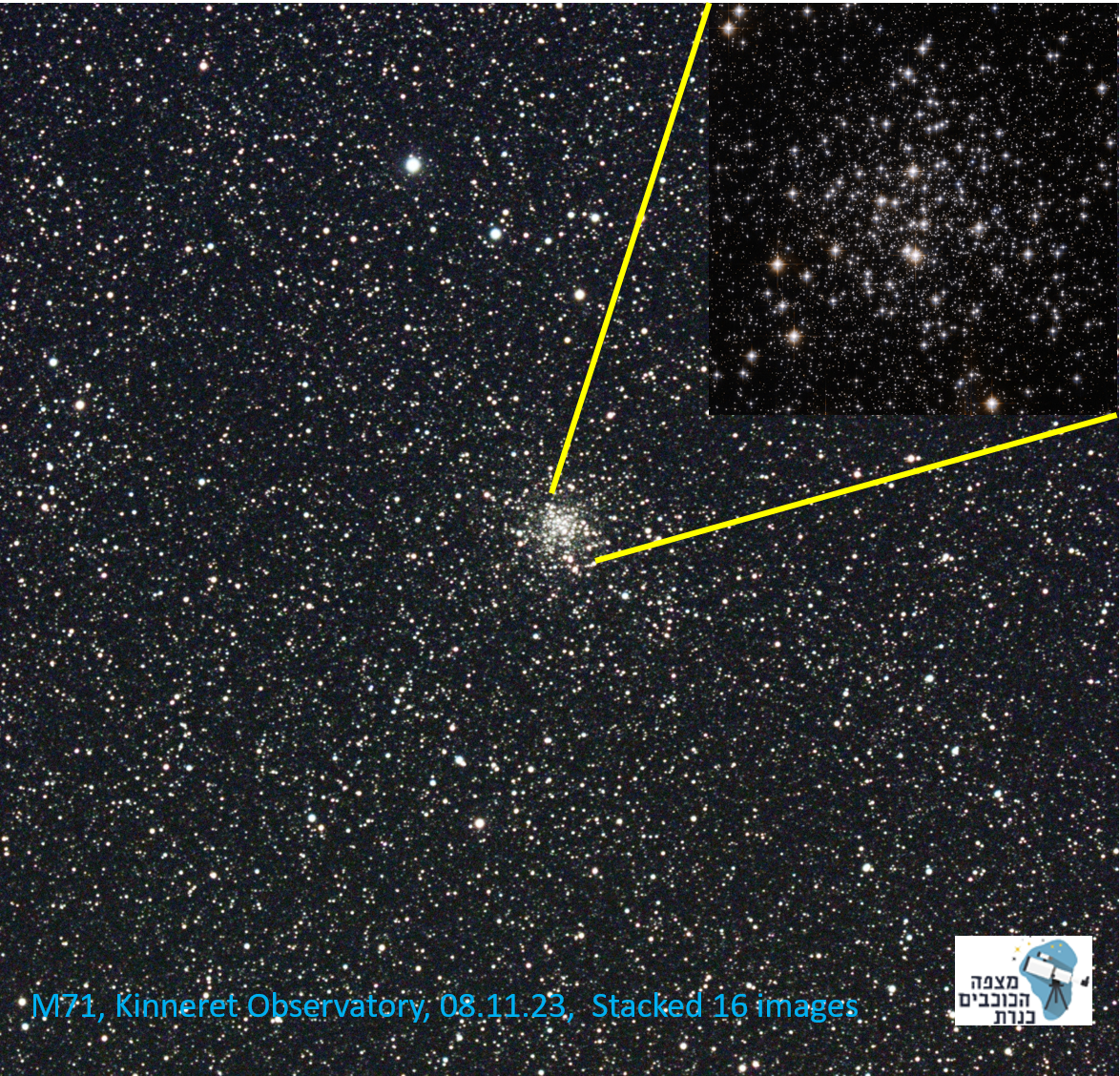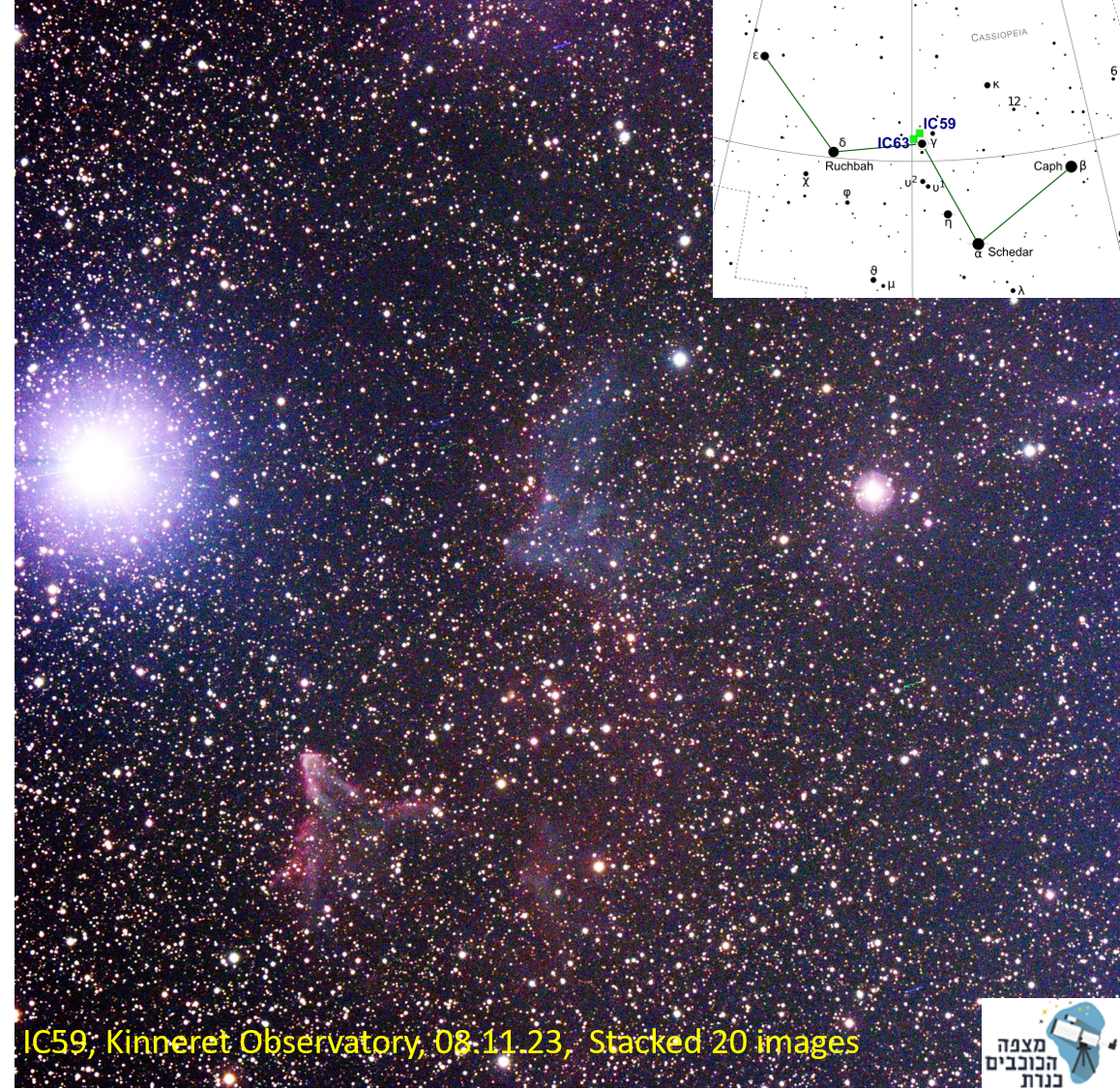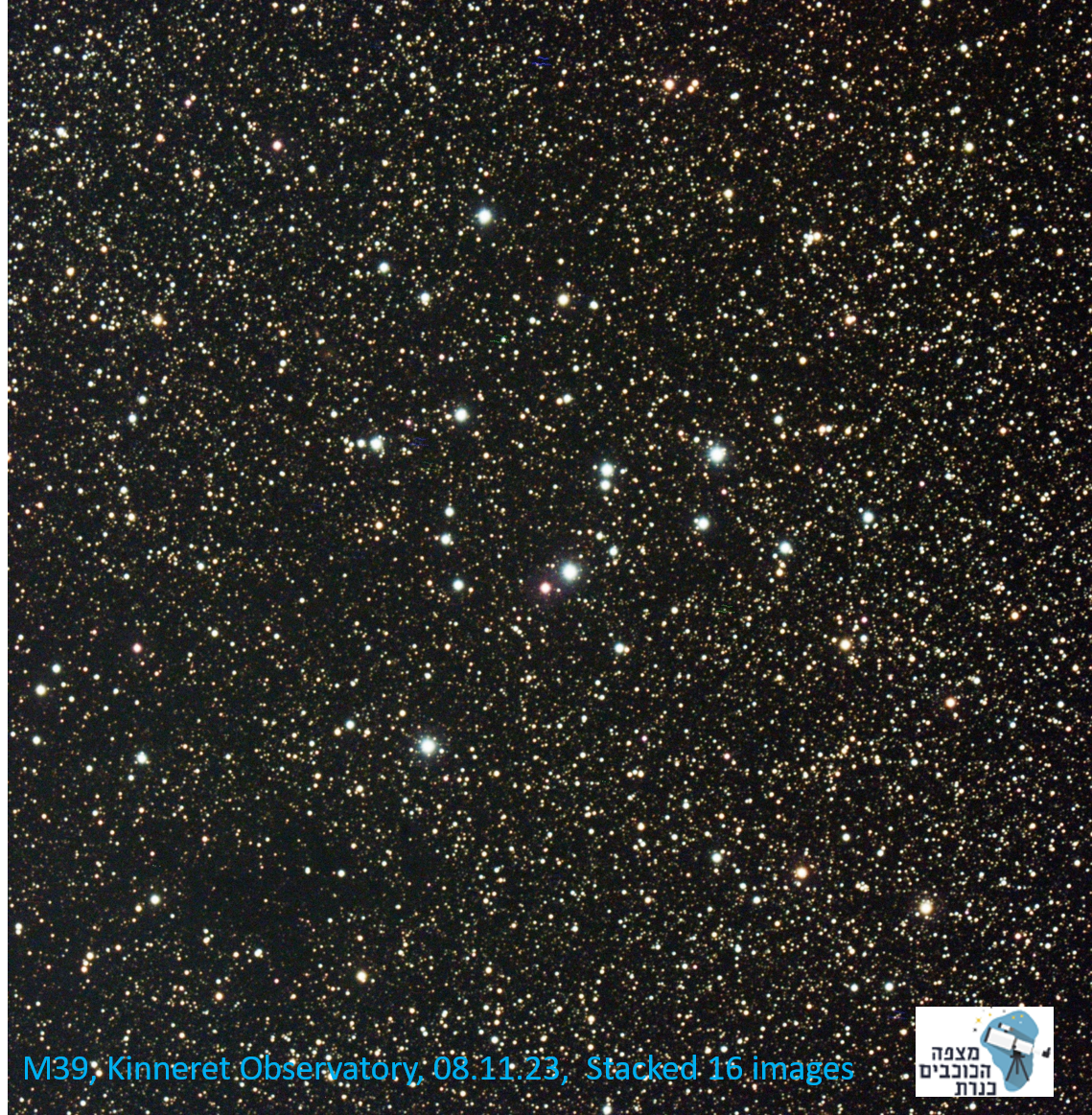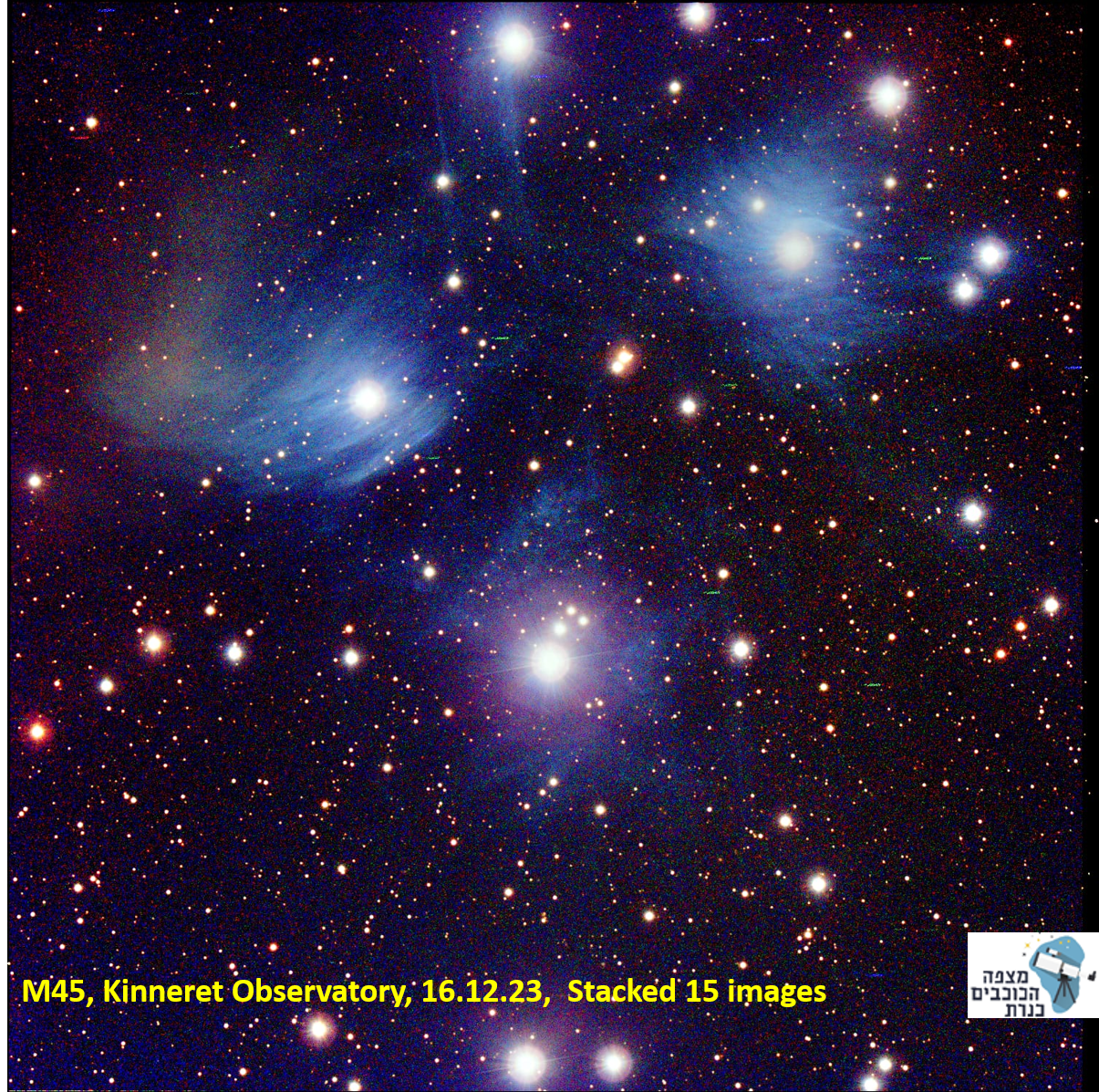
Messier 71 (M71, NGC 6838, or the Angelfish Cluster) is a small northern constellation Sagitta globular cluster. It was discovered by Philippe Loys de Chéseaux in 1745 and included by Charles Messier in his catalog of non-comet-like objects in 1780. Koehler also noted it at Dresden around 1775.
This star cluster is about 13,000 lightyears away from Earth and spans 27 light-years (8 pc). The irregular variable star Z Sagittae is a member.
M71 was for many decades thought (until the 1970s) to be a densely packed open cluster and was classified as such by leading astronomers in the field of star cluster research due to its lacking a dense central compression and to its stars having more “metals” than is usual for an ancient globular cluster; furthermore, it lacks the RR Lyrae “cluster” variable stars that are common in most globulars. However, modern photometric photometry has detected a short “horizontal branch” in the H-R diagram (chart of temperature versus luminosity), characteristic of a globular cluster. The shortness of the branch explains the lack of RR Lyrae variables due to the globular’s relatively young age of 9–10 billion years. Taking in many or only late series (Population I) stars explains relatively its stars. Hence, today, M71 is designated as a very loosely concentrated globular cluster, much like M68 in Hydra. M71 has a mass of about 53,000 M☉ and a luminosity of around 19,000 L☉.



